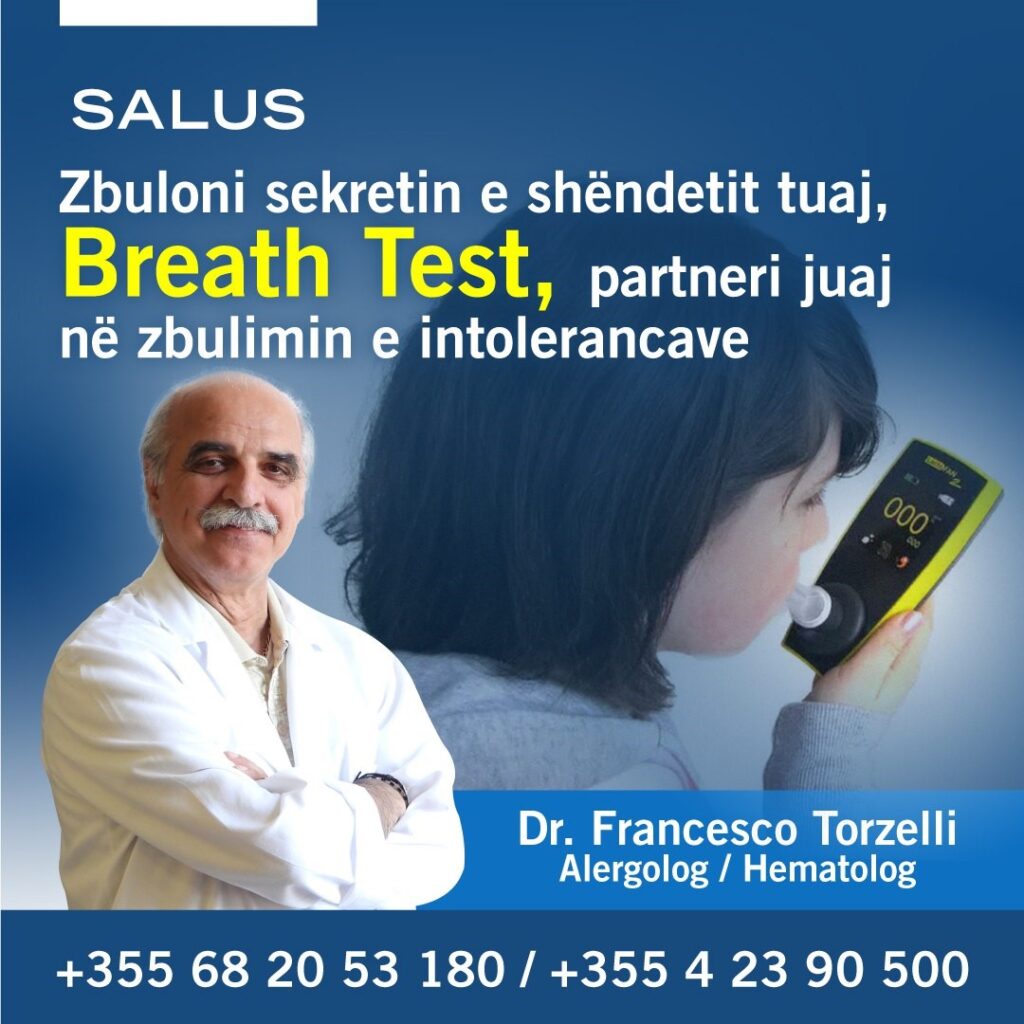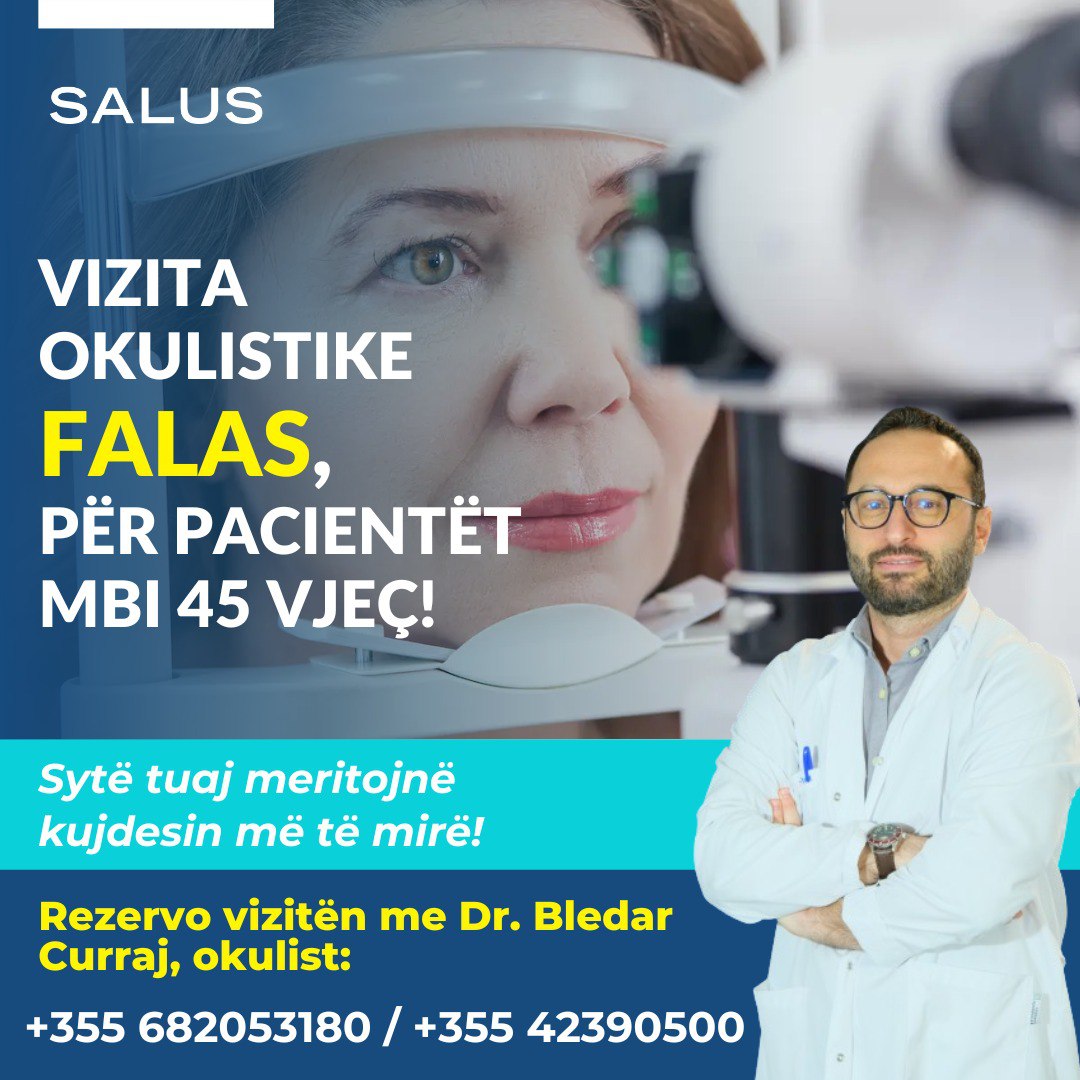ALLERGOLOGY
The Department of Allergology in Salus offers services for the diagnosis and treatment of allergic diseases including the respiratory and skin diseases. Diagnosis includes consultation with an allergist and various skin and blood examinations. Treatments include medication and Specific Allergen Immunotherapy (allergy vaccination).
Allergic diseases are based on the immune system’s response to substances that are considered foreign and dangerous. These substances called allergens include some microorganisms living in the home (aquariums), pollen, animal epithelium. Allergens are also considered certain foods or medications to which the immune system overreacts and causes various reactions in the airways or skin.
In vivo examinations performed on the patient’s skin:
- Prick test aeroallergens (allergen test forearm skin with air allergens)
- Trophoalergene Prick Test (forearm skin allergy test with food allergens)
- Prick test against insect bites (insect poison allergy test such as bees, wasps etc.)
- Patch test (backpack test with contact allergens)
- Prick by Prick (forearm skin allergy test with native foods)
- IDR (intradermal test) with autologous serum (blood plasma test)
- Prick test, IDR and oral provocation with medication (antibiotics, anti-inflammatory and anesthetic)
- Physical test against heat and cold
- Physical effort test
In vivo examinations performed on the patient’s skin:
- Total IgE
- Specific IgE for airborne allergens
- Specific IgE for food allergens
- Medication-specific IgE
- Specific IgE for insect venom such as bees and wasps
- Serum tryptase level etc.
Spirometry (test of respiratory function) which determines how affected (narrowed) the airways are as a result of various factors.
The most common allergic pathologies are:
It is a chronic inflammatory disease of the lower airways associated with difficulty breathing, coughing, whistling and tightness in the chest, which are increased when the patient is in contact with the causative allergen of the situation.)
Allergic runny nose, inflammatory disease of the upper respiratory tract associated with nasal congestion, runny nose, sneezing, and itchy nose. Rhinitis can be seasonal in cases where the patient is susceptible to perennial pollen, when susceptible to aquaria, mold, animal epithelium, etc. In the case of seasonal allergic rhinitis the symptoms are present during spring, summer and in some cases until early autumn, while in the case of allergic rhinitis they are present throughout the year.
Allergic conjunctivitis is also an inflammation, but of the conjunctiva of the eye (the ear covering and the inside of the lids), depending on the causative allergen present in the spring season or throughout the year generally accompanying rhinitis. Symptoms of conjunctivitis are watering, redness and itching of the eyes.
It is a pathology that causes air and food allergens and frequently affects children, is associated with dry, red, irritated and itchy skin.
It is a reaction caused by skin contact with various materials such as metals, hair dyes, perfume ingredients, adhesives, manicures, topical medications, rubber gloves, soap, detergents, fabric softeners and shampoos. This reaction is characterized by burning and itching of the skin, as well as redness on the skin.
It appears with red spots on the skin that cause itching and in most cases are widespread throughout the body. Depending on the duration Urticaria is considered acute if the stains are present less than 6 weeks and chronic if they are present on the skin for more than 6 weeks. Causes of Acute Urticaria can be varied ranging from an infection, viral condition, contact with a substance or allergen, bite from an insect or some type of medication etc. For chronic Urticaria may be heat, cold, factors emotional, hyperthyroidism, and in most cases the cause is unknown. Urticaria is also associated with swelling of the face or body.
It is a noticeable swelling of the subcutaneous tissue that is located in different parts of the body that, in addition to the skin and mucous membranes, also affects organs such as the larynx or intestine. Angioedema can be inherited or acquired during life.
It affects most children and is the result of consuming a particular food, which the immune system sees as a dangerous agent and reacts by displaying various symptoms on the skin (urticaria, angioedema or allergic dermatitis), in the digestive tract (vomiting). , stomach pain and diarrhea), in the airways (rhinitis, asthma) and up to anaphylactic shock. Food allergies are widespread across all age groups.
Like foods or air allergens, in some cases the medication is considered by the immune system to be harmful to the organism that responds to the appearance of red spots on the skin or urticaria, causing itching, swelling, difficulty breathing, and even anaphylactic shock life-threatening dancer.
If the patient is allergic to their venom after the bite, the reaction may range from swelling in the bite area to urticaria, difficulty breathing and swallowing, and up to anaphylactic shock.
It is considered a life-threatening reaction, which is associated with urticaria and angioedema, abdominal pain, vomiting, diarrhea, obstruction of the air, tension, arrhythmia, body rupture, loss of feeling, etc. The most common causes are eating a food, taking a medication, poisoning insect bites, etc., especially when the patient has an allergy.
- Educate the patient about avoiding the causative agent of allergic symptoms
- Drug treatment for the relevant pathologies, educating the patient on their use
- Treatment with Specific Allergen Immunotherapy (allergy vaccination), for patients with allergic symptoms and with a positive result of allergens tested in laboratory and skin tests. This treatment is done with injections or drops under the tongue and changes the immune system, makes it susceptible to these allergens, also prevents aggravated airway diseases such as Bronchial Asthma
- Another treatment is desensitization to the bite of Hymenoptera (bee and wasp) which avoids dangerous jetbag reactions to the patient.






